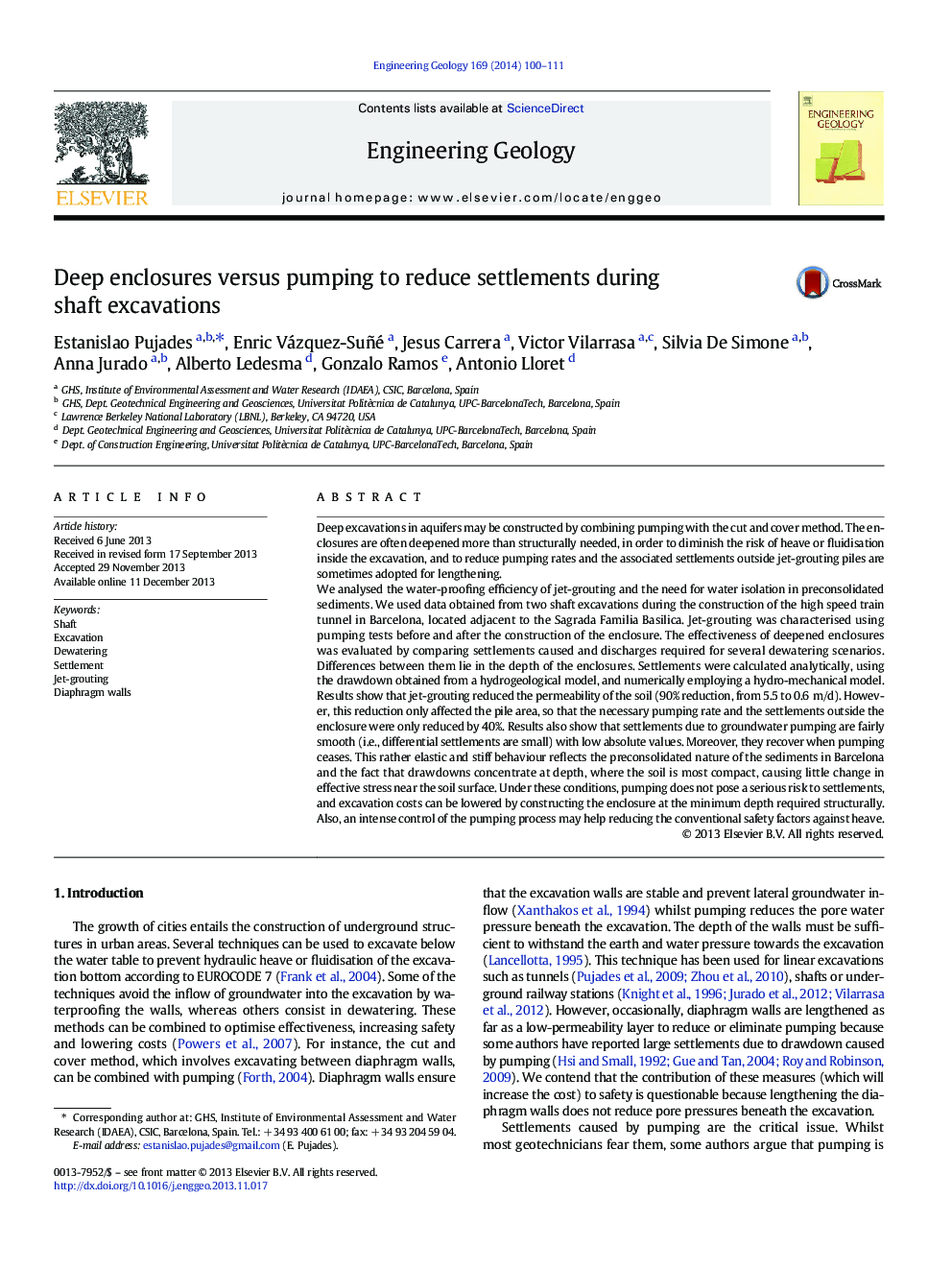| Article ID | Journal | Published Year | Pages | File Type |
|---|---|---|---|---|
| 4743660 | Engineering Geology | 2014 | 12 Pages |
•We compare the safety and the pumping effects at different dewatering scenarios.•To lengthen the enclosure does not reduce much the outside pumping effects.•Pumping effects can be predicted easily by analytical and numerical methods.•Jet-grouting reduces the permeability but not waterproof permeable materials.
Deep excavations in aquifers may be constructed by combining pumping with the cut and cover method. The enclosures are often deepened more than structurally needed, in order to diminish the risk of heave or fluidisation inside the excavation, and to reduce pumping rates and the associated settlements outside jet-grouting piles are sometimes adopted for lengthening.We analysed the water-proofing efficiency of jet-grouting and the need for water isolation in preconsolidated sediments. We used data obtained from two shaft excavations during the construction of the high speed train tunnel in Barcelona, located adjacent to the Sagrada Familia Basilica. Jet-grouting was characterised using pumping tests before and after the construction of the enclosure. The effectiveness of deepened enclosures was evaluated by comparing settlements caused and discharges required for several dewatering scenarios. Differences between them lie in the depth of the enclosures. Settlements were calculated analytically, using the drawdown obtained from a hydrogeological model, and numerically employing a hydro-mechanical model.Results show that jet-grouting reduced the permeability of the soil (90% reduction, from 5.5 to 0.6 m/d). However, this reduction only affected the pile area, so that the necessary pumping rate and the settlements outside the enclosure were only reduced by 40%. Results also show that settlements due to groundwater pumping are fairly smooth (i.e., differential settlements are small) with low absolute values. Moreover, they recover when pumping ceases. This rather elastic and stiff behaviour reflects the preconsolidated nature of the sediments in Barcelona and the fact that drawdowns concentrate at depth, where the soil is most compact, causing little change in effective stress near the soil surface. Under these conditions, pumping does not pose a serious risk to settlements, and excavation costs can be lowered by constructing the enclosure at the minimum depth required structurally. Also, an intense control of the pumping process may help reducing the conventional safety factors against heave.
